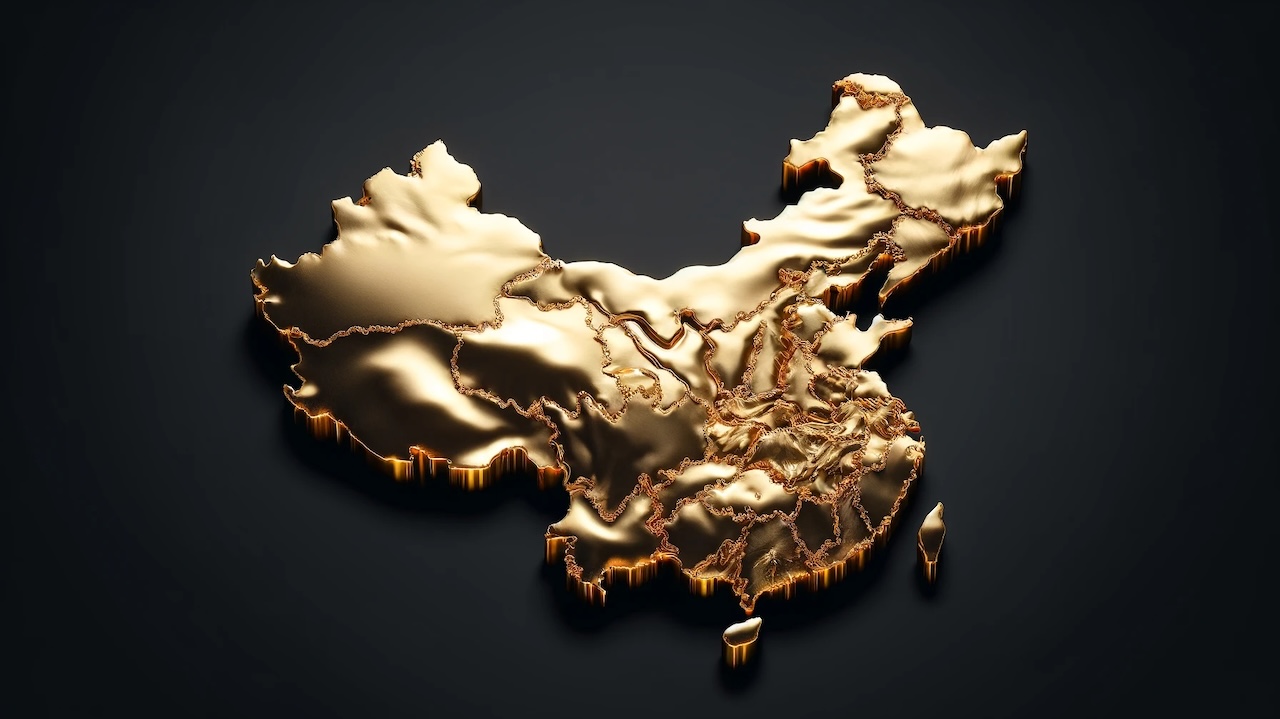Could the movement of gold from West to East set the stage for a gold-backed currency?
Some analysts think that might be the case.
And if that is the direction the world is heading, it would be disastrous for the U.S. dollar.
The impact remains unclear, but there is no doubt that gold’s axis is moving to the East - particularly China.
Franco-Nevada Corp. Chairman Emeritus Pierre Lassonde said the world needs to wake up to this fact.
“The marginal buyer of gold is no longer the U.S. It’s no longer Europe. It’s China. … China takes up over two-thirds of all the annual production…That’s where the gold price is set.”
Chinese gold demand has surged in recent months. Wholesale demand in China set a record in January. Assets under management by Chinese gold-backed ETFs also hit an all-time high.
During the first two months of 2024, China imported 367 metric tons of gold for non-monetary use. That was a 51 percent increase from the same period in 2023. Gold jewelry, coins, and bullion sales in China rose 24 percent year over year.
Meanwhile, the People’s Bank of China has been gobbling up gold for over a year. The central bank has expanded its gold reserves for 16 straight months, adding over 300 tons of the yellow metal to its stash since it resumed reporting gold purchases in October 2022. At the same time, the Chinese central bank has been dumping U.S. Treasuries.
Chinese and more generally Asian gold demand has helped drive the recent gold bull market. Even with the recent correction, gold has gained about 17 percent since mid-February.
As with any market rally, there are numerous reasons behind it. But Western reporters haven’t talked much about gold demand in the East. They have focused on the likelihood of Federal Reserve interest rate cuts and haven buying due to geopolitical tensions in the Middle East.
But as Walter Downey pointed out in an article published by Savvy Street, none of this is exactly new. And perhaps more interesting is the fact that the price of gold managed to hold ground at around $2,000 an ounce for several years despite fierce headwinds, including rising interest rates.
Chinese and Asian gold demand undoubtedly contributed to gold’s relative success despite headwinds.
And that reveals a significant shift – China has become the dominant player in the gold market.
The Rise of BRICs
China isn’t alone. The country is part of an economic bloc growing in size and influence.
BRICS is an economic cooperation bloc originally made up of Brazil, Russia, India, China, and South Africa. As of Jan. 1, 2024, the bloc expanded to include Saudi Arabia, Egypt, the UAE, Iran, and Ethiopia.
More than 40 other nations have expressed interest in BRICS membership.
The expanded BRICS has a combined population of about 3.5 billion people. The economies of the BRICS nations are worth over $28.5 trillion and make up roughly 28 percent of the global economy. BRICS nations also account for about 42 percent of global crude oil output.
The BRICS countries have expressed a desire to move away from dependence on the dollar. During last year’s BRICS summit, Brazil President Luiz Inacio Lula da Silva called on the bloc to create a common currency for mutual trade and investment. He said a BRICS currency would "increase our payment options and reduce our vulnerabilities."
Recently, Kremlin aide Yury Ushakov announced that the BRIC nations plan to develop a new payment system based on the blockchain.
Gold could underpin a new currency to challenge dollar dominance.
Downey asks the operative question.
“Can China wake up the world one morning with the announcement that there is a new currency now, backed by gold and perhaps even redeemable for gold? Or, alternatively, that the Yuan, backed by gold, is now the official currency of the 43(?) BRICS-Plus nations, who will be banking, denominating their debt, conducting trade, and doing other economic and financial business in that currency?”
Most analysts don’t believe the dollar is in imminent danger. Even with aggressive de-dollarization, the greenback still dominates global trade. And while its share has diminished marginally in recent years, the dollar remains the dominant reserve asset.
But as the saying goes, things happen slowly and then all at once. Make no mistake, China and other BRIC nations are slowly working to diminish dollar dominance, as Downey notes.
“China and the other BRICs continue to actively convert their central bank reserves into gold bullion, accounting for most of the world’s annual gold output. And continue to plan and develop their alternative intergovernmental financial systems.”
That’s the reality.
So, what could hasten the demise of a dollar?
A currency crisis.
The U.S. government seems intent on creating one with its relentless borrowing and spending coupled with unprecedented money creation. We’re already seeing problems created by this two-pronged monetary malfeasance rippling through the economy with slowing economic growth and sticky price inflation. If the U.S. doesn’t address these issues, the entire system could start to crumble.
And China will be ready to step in.
Downey explained it this way.
"In such crises (the one in the German Weimar Republic of the 1920s is the most famous example), the only salvation for individuals and governments is ‘hard money’—gold—that cannot be printed or digitally created. That is the money being accumulated now by the PBC bank and by Chinese financial industries and individuals at an unprecedented rate. Possibly the gold market has ‘heard’ this. It is almost certain that although China is not driving the immediate rally in the gold price, as the marginal buyer it will step in when there are the inevitable corrections or pullbacks in price to the level at which China is prepared to accumulate gold—and that will backstop the corrections."
This isn’t just about a geopolitical power play. Any further erosion of the dollar’s status could have significant economic ramifications for the average American.
Because the global financial system runs on dollars, the world needs a lot of them, and the United States depends on this global demand to underpin its profligate borrowing and spending. The only reason the U.S. can borrow, spend, and run massive budget deficits to the extent that it does is the dollar’s role as the world reserve currency. It creates a built-in global demand for dollars and dollar-denominated assets. This absorbs the Federal Reserve’s money creation and helps maintain dollar strength despite the Federal Reserve’s inflationary policies.
But what happens if that demand drops? What happens if BRICS nations and other countries decide they don’t want to hold dollars?
A de-dollarization of the world economy would cause the value of the U.S. currency to crash and likely spark a currency crisis. You and I would feel the impact, with more price inflation eating away at the purchasing power of the dollar. It could even lead to hyperinflation.
In other words, even if China and BRICs can’t usurp the dollar, they could significantly erode Americans' standard of living.
It’s important to understand that the real risk isn’t from China. It comes from American policymakers who continued to ignore the ramifications of their reckless policies and keep kicking the can down the road.
Eventually, they are going to run out of road.

About the Author:
Mike Maharrey is a journalist and market analyst for MoneyMetals.com with over a decade of experience in precious metals. He holds a BS in accounting from the University of Kentucky and a BA in journalism from the University of South Florida.





